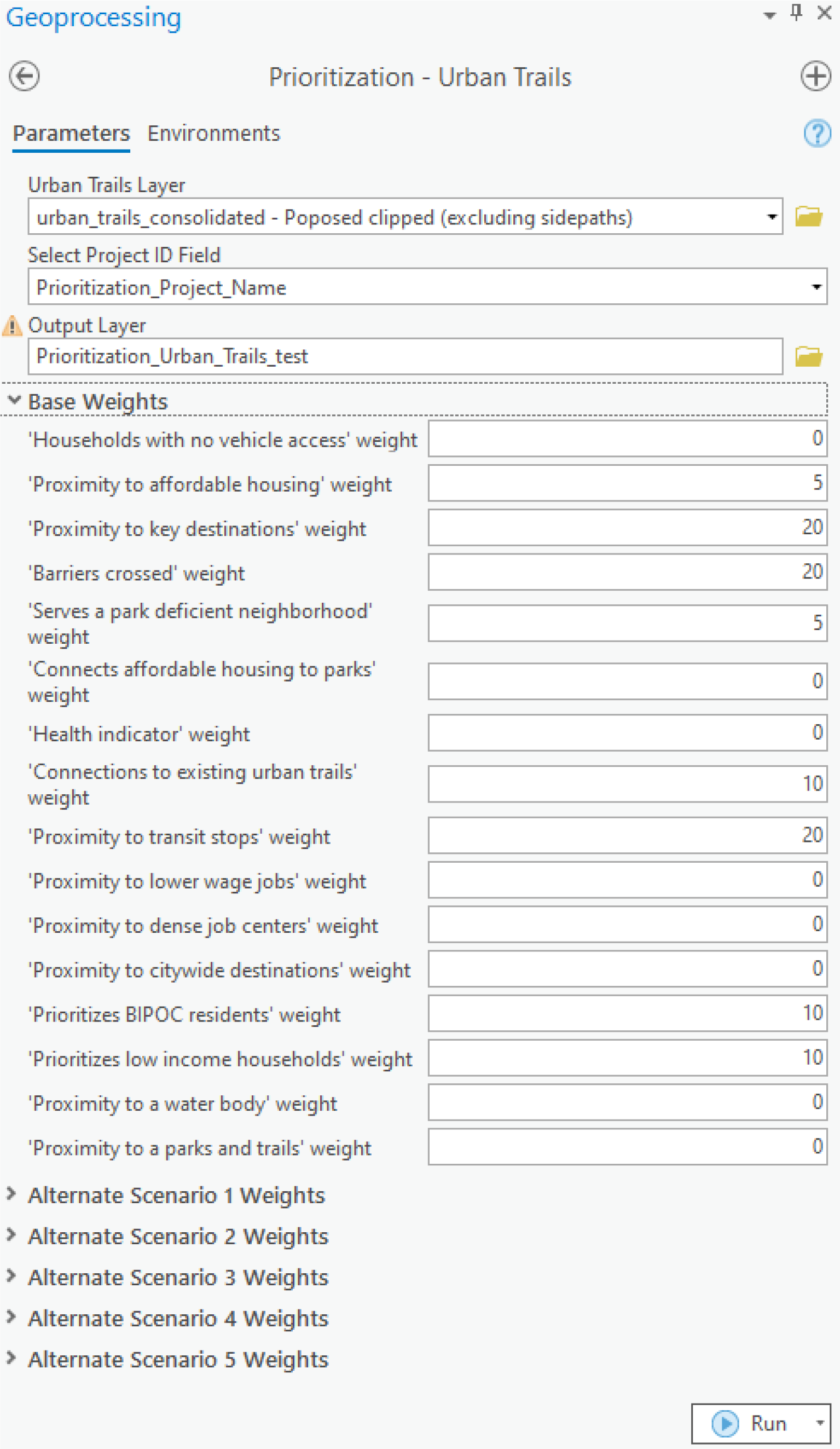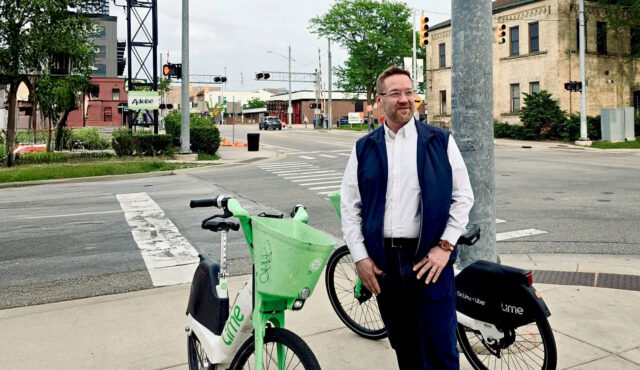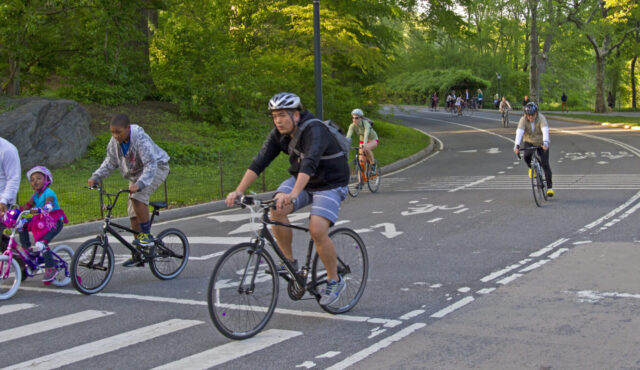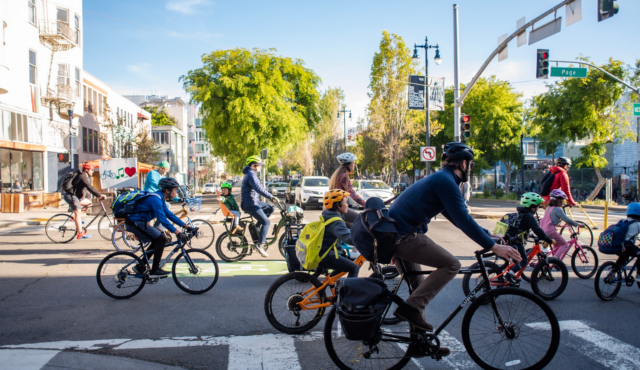The City of Austin faced an exciting but daunting challenge: deciding how to use $300 million in bond funding effectively and equitably to address thousands of miles of sidewalk, trail, and bikeway gaps. To manage this massive challenge, the City looked to Toole Design to identify the most important locations for investment, and to ensure the investments aligned with community values and priorities.
What tools did we use to accomplish this task? We created our own.
Custom Geographic Information System (GIS) tools are revolutionizing the way urban landscapes are understood, managed, and developed. For the City of Austin and a growing list of clients throughout North America, we are developing tailored GIS analysis tools to harness the power of spatial data and enable city planners and decision-makers to delve deep into the intricate web of urban complexities.
As part of the ATX Walk Bike Roll project, we developed a suite of GIS tools — 14 in total — for the City to use now and long into the future. These custom tools visualize data; identify gaps in infrastructure; and inform improvements in pedestrian and bicyclist safety, connectivity, and accessibility across the city.
Coverage and Access Tools
The coverage and access tools that we built identify which parcels in the city are covered by low-stress bicycle and pedestrian networks (places where a wide range of people would feel comfortable walking or biking). They also identify which parcels have access to common destinations, such as grocery stores or schools. Importantly, these tools automatically consolidate the bike network, sidewalk network, and street network datasets with every parcel in the city — a major time-saver for City staff.
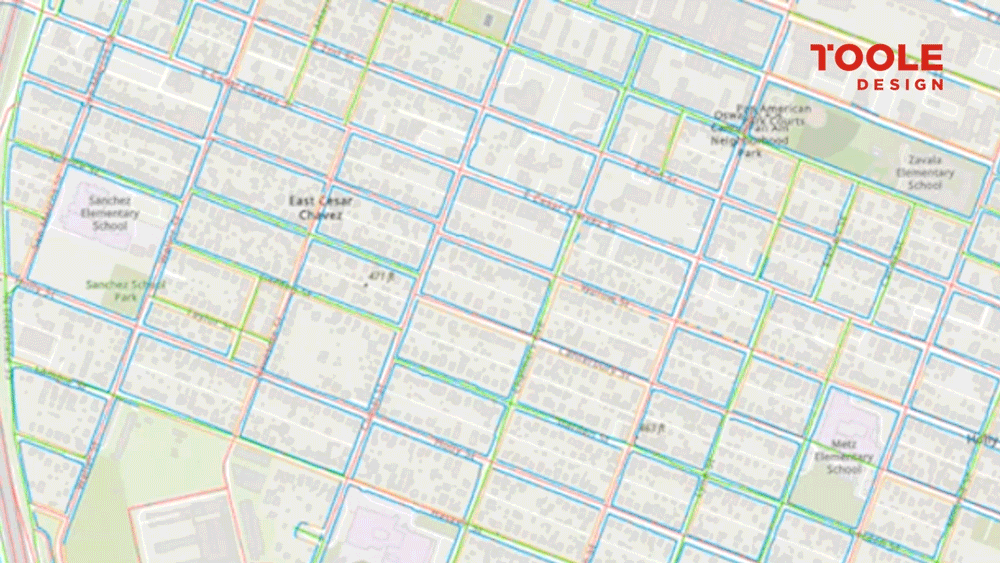
Crossing Gaps Tool
We also built a crossing gaps tool that uses pedestrian crossing locations and street networks to identify long corridors that don’t have low–stress crossings. It also identifies transit stops that don’t have a suitable low-stress crossing nearby. This helps planners understand and visualize what areas of Austin most need crossing improvements.
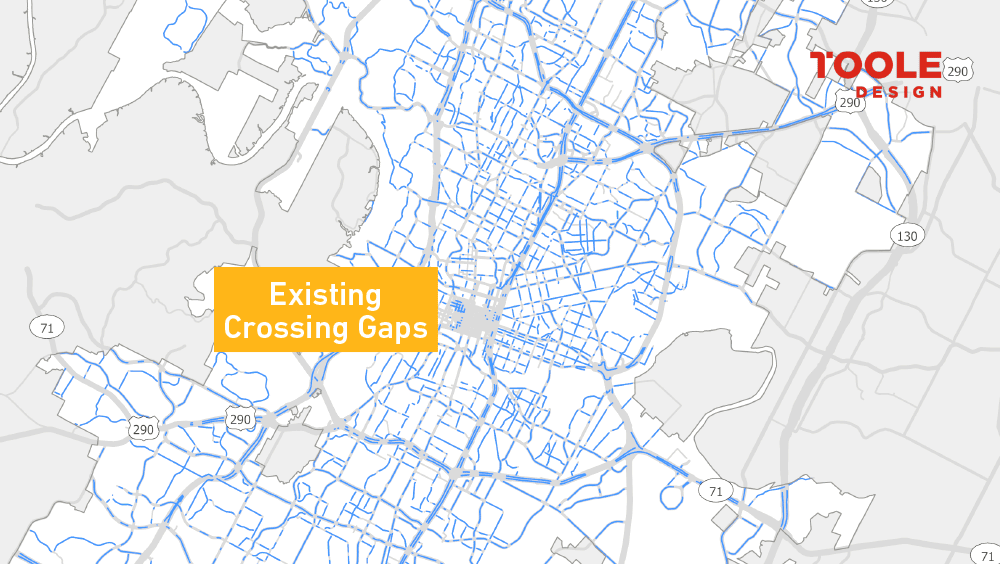
Prioritization Tools
Finally, we developed four prioritization tools to help the City invest resources in areas with the most need. Each tool uses different input variables and allows users to adjust the weight of each variable. The tools connect up to 18 input datasets to a given set of proposed project locations, and they assign prioritization scores to each location.
Having this complex spatial processing automated is a game-changer for Austin. City staff can quickly update prioritization inputs, ensuring that the projects they build are relevant to the city’s ever-changing needs.
We built each of these 14 tools with long-term use in mind — City staff can regularly update the analyses with new data. John Eastman, the City of Austin Sidewalks and Urban Trails Division Manager, estimates these tools will save City staff weeks of effort each year as they update project priorities and measure implementation progress.
The suite of GIS tools will save weeks of staff time annually, while enabling us to make better and faster pedestrian infrastructure decisions.
—John Eastman, City of Austin Sidewalks and Urban Trails Division Manager
The custom GIS tools we developed for ATX Walk Bike Roll are enabling the City to implement projects more intentionally and efficiently — and they represent just a handful of the ways custom tools can supercharge sustainable planning efforts. These tools empower cities to:
- Visualize spatial patterns and relationships
- Facilitate informed decision-making
- Optimize resource allocation
- Mitigate risks
- Prioritize infrastructure projects
- Engage communities in a transparent and inclusive process
Ultimately, custom GIS analysis can serve as a cornerstone for sustainable, resilient, and visionary city planning, paving the way for enhanced livability and growth in urban environments. Get to know our GIS and data science practice, and reach out to our brilliant team of experts to learn more!
